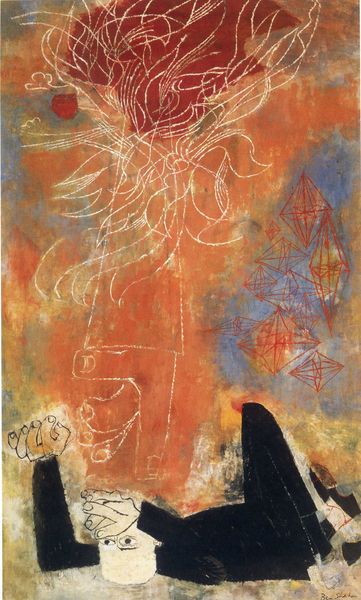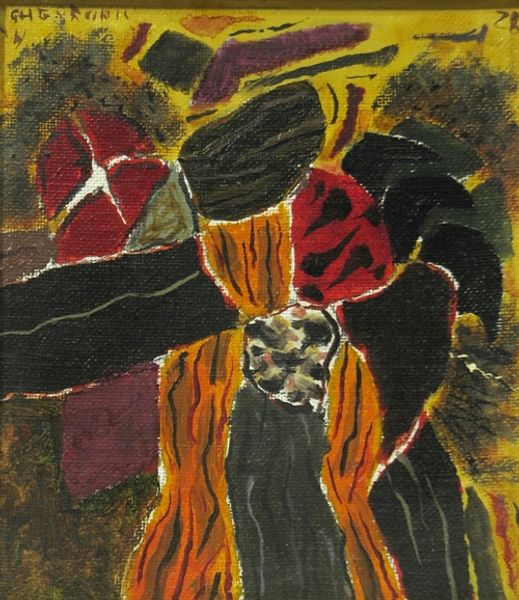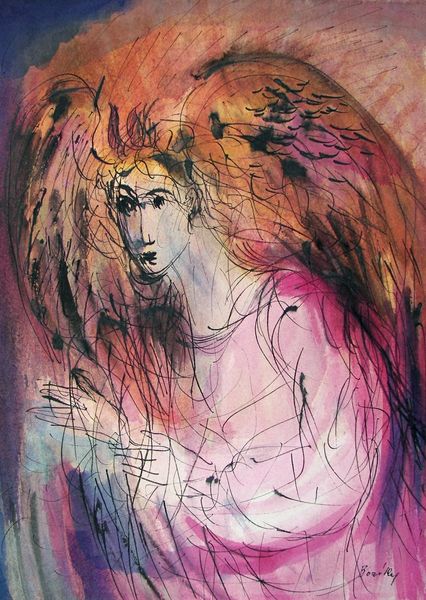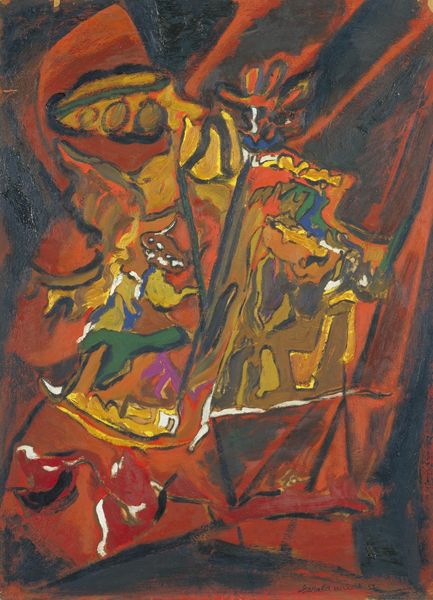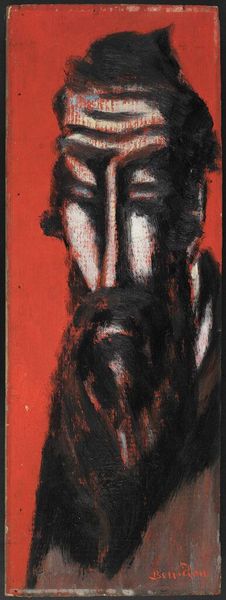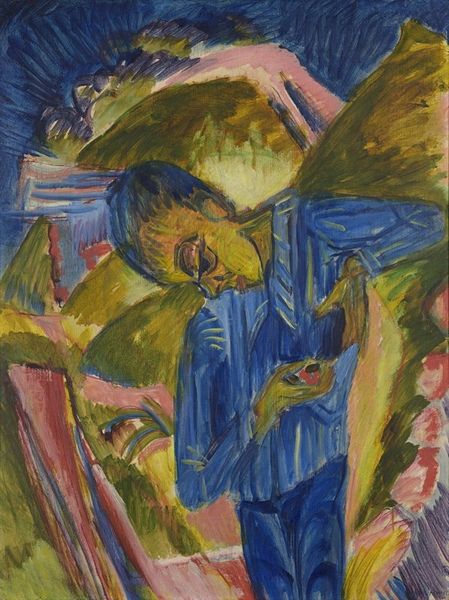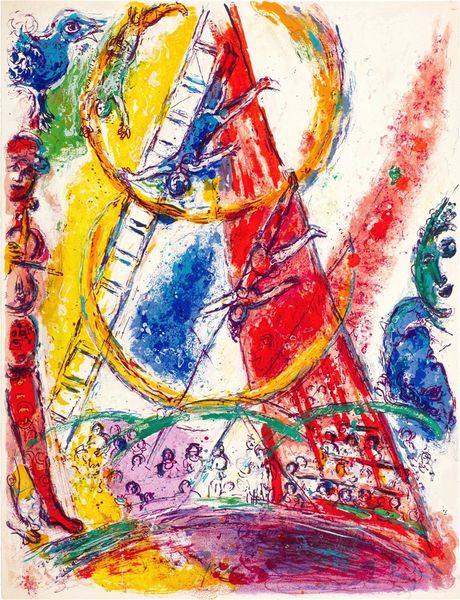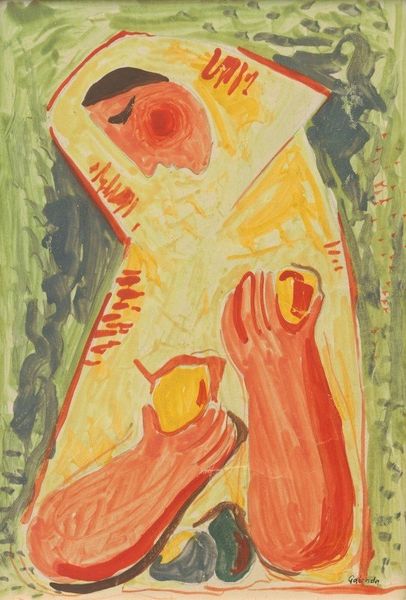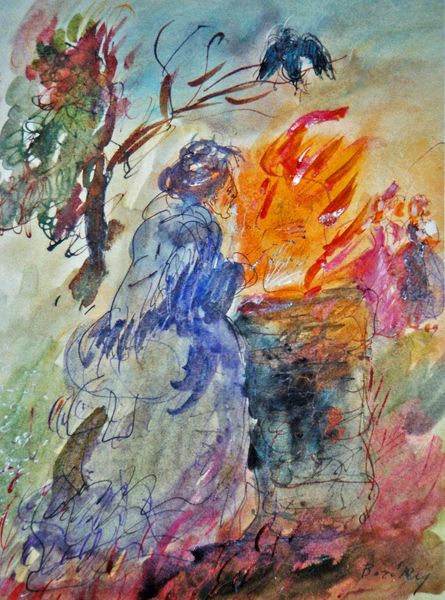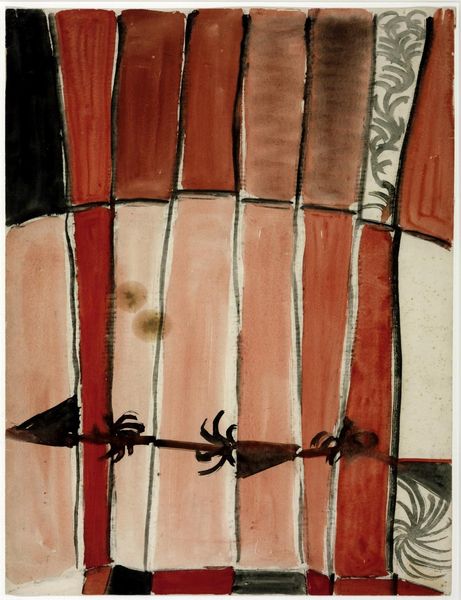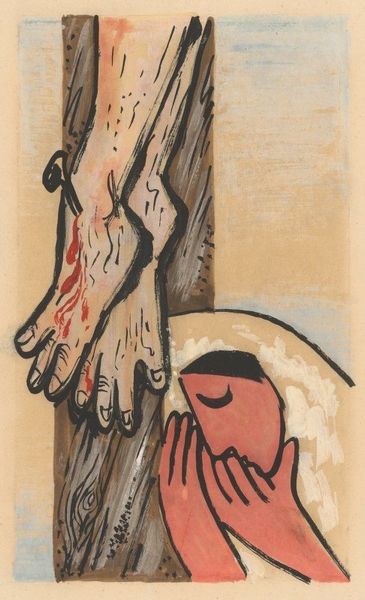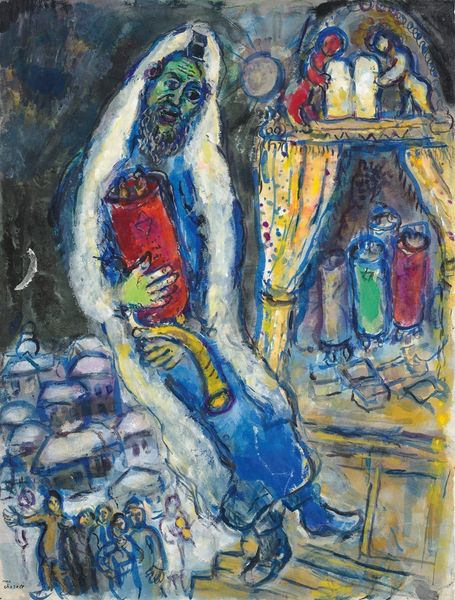
Copyright: Modern Artists: Artvee
Curator: This lithograph, simply titled "Verve #2," was created by Marc Chagall between 1956 and 1960. It features a figure playing a harp. What are your first impressions? Editor: Well, immediately I see this vibrant wash of red and pink. It almost vibrates with feeling. It seems… melancholic, though, doesn't it? Like a royal troubadour singing a song of lament. Curator: Indeed. Considering the tumultuous century Chagall lived through, a certain sadness seems almost inherent in his work. This print comes from a portfolio celebrating biblical themes, King David perhaps, and you're right, the colours evoke a real emotional intensity. Beyond just the colors, look at those harsh black outlines. Editor: They do give it a sense of raw, unfiltered emotion, don’t they? It's interesting how the crown seems almost flimsy, like it's weighing him down. The entire figure appears hunched under some sort of unseen burden. Royal or otherwise, everyone carries a weight. Curator: Exactly! Chagall often uses seemingly simple imagery—the harp, the crown—to hint at profound layers of meaning. In this instance, consider the historical and religious context. David was known as a musician but he also lived a tough life in constant political turmoil, much like Chagall did. He painted the world he knew. The way institutions treat humans has not really changed much since antiquity. Editor: So the choice of materials—a lithograph rather than, say, oil paint—speaks to the idea of accessibility, a desire to connect with a wider audience, even in the face of weighty historical themes? That almost seems counterintuitive with expressionism but I suppose the way it lets humans empathize can bring even the most removed person closer to an expressionist vision. Curator: Precisely. By using printmaking techniques, the artwork, while deeply personal, enters the public sphere more readily. It sparks dialogues about faith, suffering, and the universality of human experience throughout history. The idea is that through printing methods art is easier for everyone to digest, regardless of education or background. Editor: Seeing it through that lens, it no longer feels simply sad but quietly hopeful too. Like a promise of connection, a shared acknowledgement of our burdens but also of the beauty we can still create despite them. A song for everyone, maybe.
Comments
No comments
Be the first to comment and join the conversation on the ultimate creative platform.

